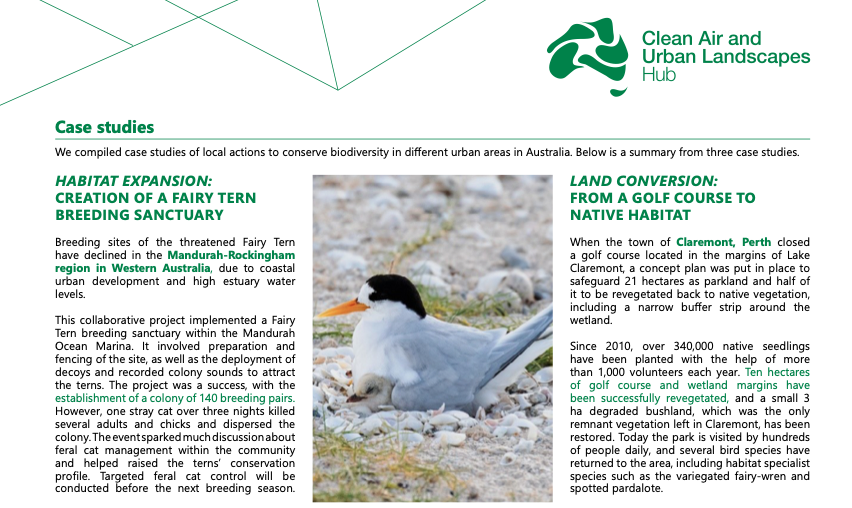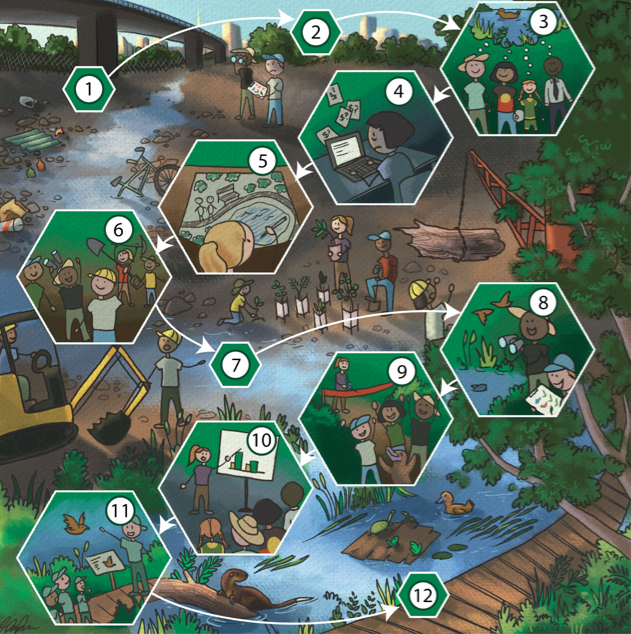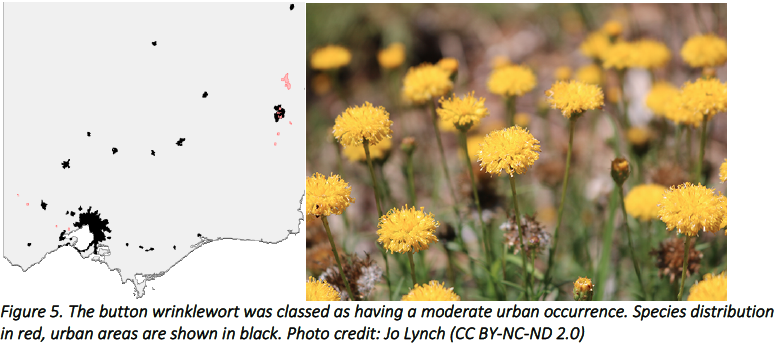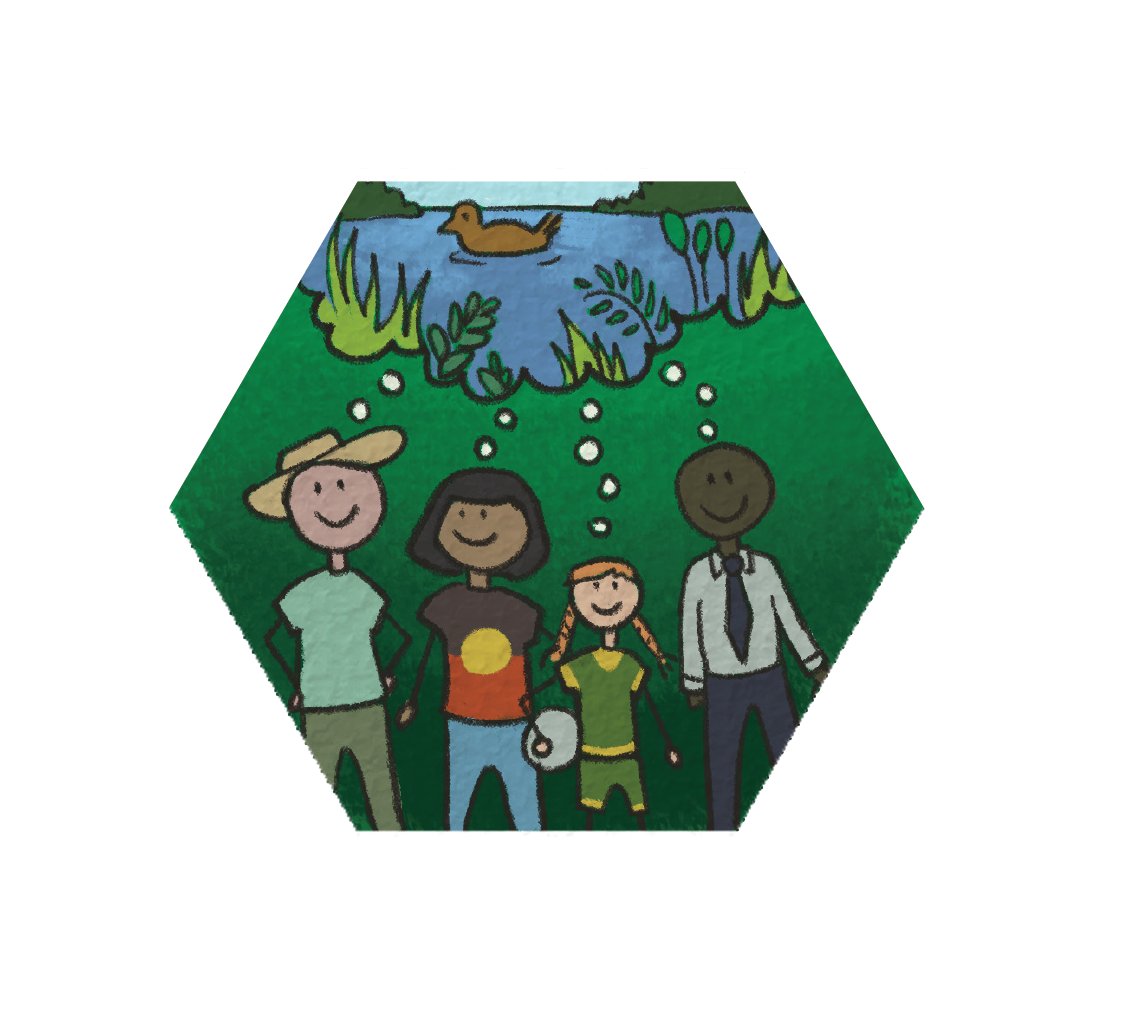What are some practical ways we can share urban habitats with native biodiversity? Our team thought about this question a LOT over the past few years at @CAULHub. Here's what we found: A thread of research and resources>>>
 Part I: A national summary of local actions. We interviewed environmental managers across Australia to find out what kinds of things they did for urban biodiversity, the challenges they faced, and how they achieved their goals https://nespurban.edu.au/wp-content/uploads/2019/06/Actions-for-Biodiversity-PART-I.pdf led by @CaraghThrelfall
Part I: A national summary of local actions. We interviewed environmental managers across Australia to find out what kinds of things they did for urban biodiversity, the challenges they faced, and how they achieved their goals https://nespurban.edu.au/wp-content/uploads/2019/06/Actions-for-Biodiversity-PART-I.pdf led by @CaraghThrelfall
 Part II of this project was led by IndigiLab and outlines opportunities to integrate Indigenous knowledge and practice in urban biodiversity conservation. https://nespurban.edu.au/wp-content/uploads/2019/06/Actions-for-Biodiversity-PART-II.pdf @INDIGILAB
Part II of this project was led by IndigiLab and outlines opportunities to integrate Indigenous knowledge and practice in urban biodiversity conservation. https://nespurban.edu.au/wp-content/uploads/2019/06/Actions-for-Biodiversity-PART-II.pdf @INDIGILAB
 The environmental managers we interviewed mentioned a whopping 353 actions. In Part III, we've organised these into a handy inventory for you to peruse. There's so much great work happening across the country! https://nespurban.edu.au/wp-content/uploads/2020/12/Actions-for-Biodiversity-PART-III.pdf led by @Whoneedsnature
The environmental managers we interviewed mentioned a whopping 353 actions. In Part III, we've organised these into a handy inventory for you to peruse. There's so much great work happening across the country! https://nespurban.edu.au/wp-content/uploads/2020/12/Actions-for-Biodiversity-PART-III.pdf led by @Whoneedsnature
 We also asked these managers "what are the main lessons you've learned?" and wow, did they deliver! Here's what they shared about the *practice* of conserving urban biodiversity, led by @Whoneedsnature and illustrated by @elia_pirtle https://nespurban.edu.au/wp-content/uploads/2020/12/Urban-Biodiversity-Conservation_.pdf
We also asked these managers "what are the main lessons you've learned?" and wow, did they deliver! Here's what they shared about the *practice* of conserving urban biodiversity, led by @Whoneedsnature and illustrated by @elia_pirtle https://nespurban.edu.au/wp-content/uploads/2020/12/Urban-Biodiversity-Conservation_.pdf
 Wetlands were a big focus of #urbanbiodiversity work. This synthesis highlights the conservation and cultural value of urban wetlands, and their significance as Indigenous places. https://nespurban.edu.au/wp-content/uploads/2020/10/Recognising-the-conservation-and-cultural-value-of-urban-wetlands.pdf
Wetlands were a big focus of #urbanbiodiversity work. This synthesis highlights the conservation and cultural value of urban wetlands, and their significance as Indigenous places. https://nespurban.edu.au/wp-content/uploads/2020/10/Recognising-the-conservation-and-cultural-value-of-urban-wetlands.pdf
 Cities are important for threatened species too. Here we explored how ‘urban’ Australia’s threatened species really are, how they use cities and towns, and propose a set of conservation approaches to help conserve them in their urban range https://nespurban.edu.au/wp-content/uploads/2020/12/M44_Threatened-species-in-cities-report_FINAL.pdf
Cities are important for threatened species too. Here we explored how ‘urban’ Australia’s threatened species really are, how they use cities and towns, and propose a set of conservation approaches to help conserve them in their urban range https://nespurban.edu.au/wp-content/uploads/2020/12/M44_Threatened-species-in-cities-report_FINAL.pdf
 Some threatened species *only* occur in urban environments. Australia has 39 of these species. You can learn more about them here https://twitter.com/kyliesoanes/status/1288998096114876421?s=20 @TSR_Hub @pelentini
Some threatened species *only* occur in urban environments. Australia has 39 of these species. You can learn more about them here https://twitter.com/kyliesoanes/status/1288998096114876421?s=20 @TSR_Hub @pelentini
 How do we help animals move through cities safely? See @HollyKirk's great thread on this work with the City of Melbourne to figure out how and where to improve connectivity across cities https://twitter.com/HollyKirk/status/1288665658981363712?s=20 and the report
How do we help animals move through cities safely? See @HollyKirk's great thread on this work with the City of Melbourne to figure out how and where to improve connectivity across cities https://twitter.com/HollyKirk/status/1288665658981363712?s=20 and the report  https://nespurban.edu.au/wp-content/uploads/2019/03/Kirk_Ramalho_et_al_Linking_nature_in_the_city_03Jul18_lowres.pdf
https://nespurban.edu.au/wp-content/uploads/2019/03/Kirk_Ramalho_et_al_Linking_nature_in_the_city_03Jul18_lowres.pdf
 The take away? Cities + towns support native species and are important for conservation. We hope the lessons shared by urban practitioners help inspire others to take actions for #UrbanBiodiversity and engage with communities to build a 'shared urban habitat'
The take away? Cities + towns support native species and are important for conservation. We hope the lessons shared by urban practitioners help inspire others to take actions for #UrbanBiodiversity and engage with communities to build a 'shared urban habitat'

 Read on Twitter
Read on Twitter







